It Was 20 Years Ago Today…
On April 4th, 1994, Mosaic Communications Corporation was officially incorporated as a going concern. If you don’t recognize the name, that’s because the company would eventually change its name to Netscape Communications Corporation when the University of Illinois (which owned the trademark on the name Mosaic) threatened legal action.
Netscape, of course, was the company that would launch the dot com era. Though not technically the first internet startup per-se, Netscape was the first internet startup that mattered. It produced the first widely popular internet application, Netscape Navigator, and it grew symbiotically with the explosion in popularity of the World Wide Web. Navigator was the way millions of people around the world were introduced to the web. Many web technologies and standards, such as as SSL, Java, Javascript, open APIs and support for online media, were innovations that Navigator made mainstream. And of course, the Netscape IPO was the “big bang” that launched the Internet Era we are still living through, making billion-dollar tech startups into a cultural phenomenon and turning a young midwesterner named Marc Andreessen into a household name.
As part of the Internet History Podcast project, I’ve collected oral histories from the founding engineers who made Netscape possible 20 years ago. I’ve lightly edited and transcribed the interviews chronologically below, but if you want to hear each interview in its entirety, you can do so. They’re at the very bottom of this post.
In The Beginning, There Was Mosaic
The idea for what would become Netscape was not actually born in Silicon Valley, but in Champaign Urbana, Illinois. There, at the University of Illinois, a group of young programmers and software developers were working for barely above minimum wage at the National Center for Supercomputing Applications (NCSA). Most were undergraduates or graduates working part-time while also completing their degrees in Computer Science.
Aleks Totic (Developer of the Mac versions of both Mosaic and Netscape Navigator. Nicknamed the “Mac Daddy.” Later at Epinions and Memory Matrix. Angel investor.): [Working at the NCSA] was more like coding on demand. We were just hackers. They had a lot of interesting projects to work on. NCSA was heaven. They had all the toys, from Thinking Machines to Crays to Macs to beautiful networks. It was awesome.
Jon Mittelhauser (Developer of the Windows versions of Mosaic and Netscape Navigator. Eventually the Navigator Product Manager. Later at Onlive.): We were all just kids hanging out in the basement of what was called the software development group at NCSA.
The University of Illinois and the NCSA happened to be hooked up to NSFNET, an internet progenitor, and by 1991 was connected to the new 45-Mbit/s (T3) system. In short, when the Internet was young and the Web itself was being born, these young workers at the NCSA were perfectly positioned to be early adopters. In fact, by 1992, when there were only twenty-six known WWW servers in the world, one of them happened to be at the NCSA and the University of Illinois.
Aleks Totic: Being at the NCSA you were already on email, you were reading news, so we were on the web before there was the web.
The World Wide Web, of course, had recently been created by Tim Berners-Lee, a young british researcher at CERN. One young NCSA employee who was especially enamored with the world wide web when it came into existence was Marc Andreessen. Andreessen, in fact, was an early and active participant in the nascent community working to develop web standards. He was also fascinated with early web browsers, but thought they could be improved.
Rob McCool (Godfather of the Apache web server, the proto-development of which began at the NCSA. Went on to do much of the server development at Netscape. Later at Yahoo and Onlive. Now at Google.): There was a visualization package who’s name escapes me [Polyview, most likely -ed.] that he [Marc Andreesen] was working on. He came a little bit after I did on an internship. My impression of him early was that he was interesting mainly because coming from a not-very sophisticated area of Chicago, all of the nerds I’d come across were all quiet, kind of nerdy types. And here’s this gigantic Scandinavian guy with a purple computer and he’s wild-eyed and telling me about all this stuff that’s gonna be great. And one of the things that he had done was… the visualization package tool that he was working on kept crashing in the free-call… so his solution was just not call free. And I was like, “Dude, really? Can you do that?” And he was like, “Yeah, well, my boss hasn’t noticed yet.”
Aleks Totic: One of the projects finished and Marc was looking for the next thing he wanted to work on and he found the web.
Chris Wilson: (Developer of the Windows version of Mosaic with Jon Mittelhauser. Joined Microsoft instead of Netscape and would spend the better part of fifteen years developing Internet Explorer. Currently with Google.): There was this buzz around the office—cause we were all in one building—the software tools group was a fairly small group overall. Marc Andreessen and Dave Thompson were poking around and Dave had run across this web stuff and he showed it Marc. And Marc got really excited about it and started working on it at night, trying to build a new version of it. And it went around the office, basically, and we all kind of were like, “Hey, that’s kind of cool. That’s a neat idea.” The most prevalent networking tools we were using were Usenet and Gopher.
Andreessen enlisted the aid of fellow NCSA programmer Eric Bina and in a few short weeks, the two banged out a new web browser, dubbed X-Mosaic, because it ran on X-Window. It was released to the world on January 23, 1993, along-side the following email from Andreessen himself:
07:21:17-0800 by marca@ncsa.uiuc.edu:
By the power vested in me by nobody in particular, alpha/beta version 0.5 of NCSA’s Motif-based networked information systems and World Wide Web browser, X Mosaic, is hereby released:
file://ftp.ncsa.uiuc.edu/Web/xmosaic/xmosaic-0.5.tar.Z
Right away, others in the basement of the NCSA wanted in on the project.
Chris Wilson: Really what happened was, Marc got really excited about it, and took it, and ran with it.
Jon Mittelhauser: Eric Bina and Marc Andreessen basically came across the work Tim [Berners-Lee] had done and they were Unix programmers at that point, working on SGIs and Suns. Linux didn’t exist yet. And they basically did the Unix version of Mosaic. The first time I saw the web was actually Marc and Eric showing me what they had done. I said, “That’s cool.” So myself and Chris Wilson decided to write the Windows version of Mosaic. It was a month or so after Marc and Eric had come across it.
Alex Totic: Very soon after X Browser was released, they said, “Hey, it would be really cool if this ran on everything.” And I was the best Mac guy around. And that was how I became the Mac Daddy.
Rob McCool: So he [Marc] finds this world wide web thing and he’s like, “Look, you know, this has to be really easy, and it has to be really easy for everyone to use. Right?” And I was like, “Yeah, ok. Whatever.” And he was like, “But the server that backs this thing is like 20,000 lines of code. And that’s an order of magnitude more than it should be, so let’s rewrite it.” So I picked up a copy of UNIX Network Programming by Stevens, which most people considered at the time—even today—the bible of writing servers. And I just banged something out. It was like 2,000 lines of code. So we put something together.
Jon Mittelhauser: The reason they did it, was because they thought it was cool. Chris and I wrote the Windows version because we thought it would be cool. And by that point, they were getting a lot of interest already in the Unix version but obviously the user base was minuscule compared to the Windows user base. Getting a version that would work on Windows was pretty key.
Chris Wilson: There were definitely a lot of people waiting for the Windows beta to come out. When we released the very first beta release sometime in ’93, we put it up on the FTP server, and we were watching the server log and I remember we got so excited when it hit like 1,000 downloads. After… I forget how long. It was like a day or a week or something. A few years ago, I did the math to figure out how quickly we get a thousand downloads on Chrome. And even then when Chrome was less popular, it was like, a 50th of a second.
The three flavors of the browser (Unix, Mac and Windows) which eventually would just be called Mosaic, proved to be wildly popular on the still infant web. A companion server was developed by Rob McCool to handle both sides of the equation: publishing and consumption. It became more than just a research project. It became a phenomenon.
Rob McCool: Marc’s idea was that it should be easy for people to publish and easy for people to consume.
Chris Wilson: At that point is was pretty clear that Mosaic was going to be a very exciting thing for a lot of people. We really wanted to have it across all three platforms (Mac, Windows, Unix). The Windows team was kind of the smallest at the time, paradoxically, because even though Windows was really really popular at the time, most of the educational institutions and most of the researchers had either Xwindow systems or they had Macintoshes.
Aleks Totic: Working with Marc [Andreessen] was pretty awesome. So we got pretty excited about this project right away. It was obvious that if it worked, it was gonna be big. We were like, “Oh, there could be newspapers on the Net and all this information can be out there for everyone. How phenomenal could that be?”
Jon Mittelhauser: When we did Mosaic the three versions were completely separate code bases. We would get together, middle of the night, and come up with some cool idea—images was an example of that—then we would go off and race and see who would do it first. Other times it was: one of the groups came up with some idea and did it. Did the other groups do it? If they thought it was a good idea.
Aleks Totic: When we knew we were on the threshold of something big was when the New York Times published its first article about the web. By John Markoff. I think it was on the front page. And the phone system crashed. There were so many people calling in that basically all long distance lines into Champaign Urbana—nobody could get through anymore!
Even small innovations at the time seem bigger in retrospect. For example, it was Mittelhauser who came up with the hand icon for links.
Jon Mittelhauser: It was really, really easy to change the icon on Windows. It was a single call. So, I’m like, “Oh, when it goes over a hyperlink it’s sort of Windows standard; you change to the hand icon to indicate you can click on it.” That was five minutes of work. And then of course that forced everybody else to go do it because it was a good idea and it was popular. There was often a competitive aspect of trying to come up with the cool thing; get it done first.
Adding support for embedded images would be one innovation that truly made Mosaic take off… and also proved to be the most controversial. Most people don’t remember this, but the web had been almost entirely text-based up until this point.
Jon Mittelhauser: Images was definitely an idea we talked about as a group and we went off and raced to see who could do it first.
Aleks Totic: This is basically a bunch of guys sitting in front of their computers all day long thinking stuff up.
Jon Mittelhauser: We said hey, we should put embedded images! It was a highly requested thing. And it was really easy, again, to do in Windows because Windows had this technology called Object Linking and Embedding. So prior to images being embedded, basically the way it worked was, everything was text. You could put a link in there and click on it and it would bring up a separate program to view the image. In Windows it was really easy to say, “Well, take that separate program and just put the embedded image inside my program.” We didn’t actually write image viewing code at that point in Mosaic, we just embedded the built-in program to view it. It was really quick and easy for me to do that first.
At the first-ever web developers’ conference, held in Cambridge, Massachusetts in the summer of 1993, the addition of images proved to be a divisive issue. Even the author of the web, Tim Berners-Lee, was not exactly happy.
Aleks Totic: There were 30 people there. Total. That’s how small the original web was.
Lou Montulli (Developer of an early, text-only browser called Lynx. He would later join the Netscape team as a founding member. While at Netscape, he would be responsible for the development of the first browser cookie, http proxying, and the implementation of animated .gifs. He would eventually co-found Epinions, Memory Matrix and is currently at Zetta.net.): There was a definite schism between us young kids and especially Tim Berners-Lee, who wanted to keep the web essentially lowest common denominator. I wouldn’t say that he was opposed to adding images and other things, but he was opposed to the methodology at which it was going about. We had a bunch of discussions around that at the conference and came up with some interesting ideas. That’s where the idea of <alt> text came from. We added the line break. The <br> tag. There really wasn’t any presentation markup in HTML at that time.
Jon Mittelhauser: Images caused a lot of angst among the early web community because we just went and decided this was a cool thing and decided to put them in. Tim and those guys had a very sort of European-academic attitude… really wanted some philosophical things to be inherent. And we were more pragmatic and wanted to put in what people wanted. One of the things Tim felt very strongly about—and I love as a theory—is that the data and the presentation were completely separate. The content of the web page was completely separate from how it displayed, and then it could display on any device. In that world, you don’t worry about putting images in because as soon as you put an image in, then the designer wants control over where to put it, right? We had a very pragmatic view—and I would say that time has shown it to be correct—that for it to be successful it needed to have this capability. It was one of those things that caused explosion [of web adoption]. We’re humans. That’s more interesting to look at than a page of text.
For a time, the small group of hackers were left relatively alone to continue with their innovations, fueled by their passion for the project, the immediate feedback from users and the speed with which they could iterate.
Aleks Totic: For the first time, you’d release something, you’d have all these users. And the users were around the world. So, nowadays it’s kind of commonplace; but back then, you would be working, and your U.S. users are going to sleep. But then you work alone for a little while, and then boom! You have all these emails with your European users who are just waking up. So, you were just running on adrenaline all the time. The feedback was instantaneous. And all this stuff is taken for granted now. Back then, it was completely revolutionary. Back then, you used to ship software on CD-ROMs.
Jon Mittelhauser: Software at that point was on a two year release cycle. That was the way software was done. The biggest problem with that is you get very limited feedback. You’re pretty much done with the product by the time you get feedback. Whereas, the internet development style that is prevalent now with a lot of things is a quicker cycle with more feedback earlier on so you can adjust your path and figure out what’s working.
Chris Wilson: Assigning tasks wasn’t a big thing at NCSA at the time. We were very, very open about what we were working on and working on things you found really interesting, rather than just, “Oh your job is to do this project here and don’t do anything outside this.” Certainly, we were a lot more flexible than that.
Aleks Totic: Marc [Andreessen] was the X [Unix] guy. All the communications went directly to him. I was the Mac guy; anybody having anything to do with the Mac browser—any bug—I would be responding to them personally. And the same was true for the Windows team. So, there was this really intimate, crazy thing, where there are tons of people talking to you and you’re just one guy. Right there. Doing stuff.
This relative freedom and benign neglect from the higher-ups at the NCSA was not to last forever.
Jon Mittelhauser: It was a side project that we did kind of separate from our major assignments as students. The short version is, once it took off and started getting a bunch of public notice, first, it became our official project—which was a good thing! And second, over time, in sort of classic bureaucracy, other people started getting assigned to it, and then other people started getting assigned to manage it. Obviously, this was a project we felt passionately about at this point. We had created it and believed that we knew what we wanted to do next, and we had our own goals. And those weren’t necessarily aligned with what NCSA as an organization wanted, or the people who were all-the-sudden put in charge.
Aleks Totic: NCSA is a research lab that gets a lot of its funding from the government and universities. This project was not part of any particular grant. It was originally budgeted out of the general budget. There was no money coming in because of it. Of course, as soon as it got successful, that was going to change. Instead of the original six-hackers structure, now the grownups are coming in and saying we need to run this as a serious project. You have a lot of people who have very different agendas and very different visions of what the web is going to be like. For example, one of the early ideas by higher-ups was that we should track everybody and send that data back to NCSA because this is going to be the world’s greatest social study project. We’re like, that is insane! You can’t do that.
Chris Wilson: There were personality conflicts on the team. The software tools group really did have a charter to continue doing this scientific visualization work; that was what they were originally created for. The web stuff doesn’t quite fit in the mission in the same way. I think that Marc and some of the other guys there really wanted to see NCSA just drop everything else like a hot rock and go totally support the web and scale up to do it. If you were in a startup and you saw one of your products getting so much attention and having so much potential, absolutely you’d figure out how to do that, right? You’d go mortgage your house. You would run with it. NCSA was not really capable of scaling like that.
Aleks Totic: It becomes a fight of who is going to determine the future of Mosaic. Now there’s business interests involved. People want to license it. With the licensees, they would like you to implement a particular feature or work on their pet platform. And there’s other people coming in and starting to code with us. And they’re not quite on the same fanatic level we are. Nowadays, I kind of feel a little bit more charitable toward my coworkers at that time. But at that time, what I was thinking was: who are these people coming in and ruining all my code? Suddenly, you have bureaucracy coming in.
Andreessen especially chafes under the NCSA’s increased bureaucracy. After graduation—at the beginning of the year in 1994—he quits the NCSA and heads to California to start a career. Chris Wilson leaves around the same time, first to go to a company called Spry, and eventually to join Microsoft.
Aleks Totic: He [Andreessen] had to lead at NCSA. And if he couldn’t lead, he had to leave.
Chris Wilson: I think the opportunity just got to be quite a bit too much. Particularly for Marc, who I think really wanted to go run with the possibility. The potential there was clear. And NCSA to him was not really realizing that.
Aleks Totic: Early on, in discussions with Marc over beer, and other guys… When we got into fights with our management… We were like, “This government stuff is really annoying. People are in a position of power because of what their title is, not because of their coding. What would be really cool is just to have a purely commercial company. Like com.com.com. Purely meritocracy based.” That was, like, one of our daydreams.
Jon Mittelhauser: We found, in effect, control was taken away and influence was taken away. So, that obviously is part of what led us off to go start up Netscape.
The Founding Of Netscape
Marc Andreessen is in Silicon Valley at the beginning of 1994, at a company called Enterprise Integration Technologies, working on web security products. But he initially found that the Valley wasn’t quite the savior he was looking for.
Jon Mittelhauser: Silicon Valley, to some degree, was stagnating. There were big companies out here, the HPs and the SGIs and the Suns and the Oracles and those. But there wasn’t that much interesting innovation. There wasn’t a ton of little startups. Most of Silicon Valley tended to be hardware.
Aleks Totic: So Marc goes to California and he starts working at EIT. And we were all really sad. Because, working with Marc was amazing. He was the leader. He was the natural leader. And we missed him. He was, like, the voice that would always stand up to power at NCSA. He was a very strong advocate for what we wanted. Without him, we’re still doing pretty good coding work, but we can’t push as fast as we want. It’s more like, now, we’ve just become programmers. Before we were like, a team on a mission.
Rob McCool: He [Andreessen] graduates. He was a year ahead of me. He comes out here to California and he goes to a place called EIT. He’s just bored stupid there. He can’t stand it.
The savior for everyone came in the person of Jim Clark, Silicon Valley legend. Co-founder of Silicon Graphics, Clark had recently left SGI. Was he disgruntled? Pushed out? Accounts differ. But one thing was clear: he wanted to start a new company. So, he was looking for “the next big thing.” An associate, Bill Foss, told Clark to look up this hot-shot young programmer named Marc Andreessen, who had recently relocated to the Valley.
At some unknown date, Clark sent Andreessen the following email:
Marc:
You may not know me, but I’m the founder and former chairman of Silicon Graphics. As you may have read in the press lately, I’m leaving SGI. I plan to form a new company. I would like to discuss the possibility of your joining me.
Jim Clark.
Clark quickly made Andreessen part of his brain-trust as he continued casting about for new business ideas. Clark was focused on the hot idea of the time: interactive television. He thought he might be able to start something with a cable company; or maybe Nintendo.
Lou Montulli: When Jim and Marc first met, they were throwing around a bunch of other ideas. Jim had done some really interesting things with on-demand television and some things with Nintendo and some other interesting projects. But eventually, they came to their senses and realized that the web really was the right opportunity.
Aleks Totic: We kept in touch. And then he [Andreessen] told us he met Jim Clark. He was very excited about it. One thing let to another and he said, “We’re not going to do Nintendo network, I think we’re going do the web.”
Jon Mittelhauser: Marc basically sends mail, says, “Hey, I met Jim Clark. He’s a cool guy. He’s looking to start up a company. And I’m talking with him about what we should do.” At that point Jim was very interested in doing interactive TV. He was trying to convince Marc to go do interactive TV. And the more they talked about it, the more Marc basically just said, “What we really should do is go do Mosaic right. Do a Mosaic killer.” He basically got Jim around to that point of view over the course of March. And then, at the beginning of April, Marc sends a mail saying, “Hey, Jim and I are flying out to meet with you guys.”
Rob McCool: He [Clark] grabs Marc and they send us a note. It was something like, “We’ve got a new project we want to talk about.”
As mentioned, Clark and Andreessen incorporate the company as Mosaic Communications Corporation on April 4, 1994. Shortly after this, they fly out to Illinois to “get the band back together.” The mission: recreate the Mosaic magic, but this time, do things right. Lou Montulli, of Lynx fame, is brought in to supplement the team.
Lou Montulli: I was at the intercollegiate national racquetball tournament. I came back from that and had an email waiting for me. I ended up calling Jim back. Got his personal assistant instead of Jim. Basically, the message was, “Jim and Marc are going fly out to Illinois; would like to talk about starting a company; would like you to join him there.” They were going to meet the very next morning. This was like 1 o’clock in the afternoon. Basically, I got back into my car, drove back to the airport, and bought a ticket to Illinois on the next flight out, which was a little stressful as a college student. The most I’d ever made in salary at that point was like $8,000 a year. Basically, living check-to-check. I remember asking his assistant, “So, are you sure that Jim can reimburse me on this? Because I really don’t have the kind of money that I can just get a flight on the same day.” Fortunately my credit card had enough on it.
Jon Mittelhauser: They fly out mid-April. Jim meets with us all, basically, at a hotel where he’s staying—the bar at the hotel—faxes himself offer-letters and offers us jobs to start up the company that became Netscape. It was kind of a no-brainer to say yes. “I’m gonna pay you to go work on the project that you want to go work on and give you guys control and the chance to redo it right.” I was the first of that group to go up and sign the offer-letter and that was just because I really had no doubt. Here’s a good salary. None of us understood things about stock options or any of that.
Aleks Totic: So they flew in and it was phenomenal. Jim Clark came in; we didn’t really know much about Jim Clark, but we trusted Marc. He gave us all these papers to sign. We just met him for one night. Next morning, we all walked in and quit. And we said, “We’re going with Marc.” That was on Thursday. On Saturday, we were in California picking out apartments. And a week later, we moved out here.
Lou Montulli: We were in the hotel lobby, or lounge. We basically got together and started talking about what we could do. The idea of creating a company around commercializing the web. This is what we had been doing for the last couple of years, so there was certainly no disagreement. We did have individual meetings with Jim. It’s hard to say what the purpose of that was. I think Jim was selling us, and also trying to make sure all of us weren’t a little crazy. There was definitely some selling going on. Jim… talking about things which—to our starry eyes—seem incredible and unbelievable. But he’s a very convincing guy. And passionate. I remember walking out of that meeting being incredibly excited about the opportunity, and how wonderful things were going to be in the beautiful land of California.
Rob McCool: They get us together at this—I think it was a bar—I think it was called The University Inn. Honestly, I was a nerd in college. I’m a nerd now. I didn’t really get out to bars and things. So, we go out to this place and they’re basically like, “Yeah, let’s do Mosaic, except let’s make a company out of it.” And I was gonna be the server guy. And the other guys were gonna be the browser team. He [Clark] has this Jedi Mind Trick speech where he brings us all upstairs and we all come down saying, “Yes, we’re going to make a company! It will be great!”
Jon Mittelhauser: I have so much respect for Jim Clark at this point, because he could have screwed all of us over we would never have known. And he truly did well by us and treated us the way I hope other companies are treating their founding engineers. He really did make us founders of that company as opposed to slave-labor he was taking advantage of.
Rob McCool: He [Clark] basically gives me a letter with the salary and a number of stock options. I didn’t even know what stock was at that point but I knew that the salary was enormous.
Aleks Totic: I kind of had a feeling that this was coming so I made t-shirts to commemorate the occasion. Everybody signed them.
Nowadays, a bunch of college kids running off to California to found a billion dollar startup is not exactly unusual. But the very fact that the startup culture of Silicon Valley has permeated American culture is in no small part because of what the Netscape boys did.
Lou Montulli: Unfortunately, the startup culture was defined by the press and the press just take what they think is most interesting, juicy and fascinating out of their limited time and they publicize that. Especially post-Netscape, in 1998, 1999, every startup was trying to do the things they read about in magazines; but what they read about in the magazines was nowhere near the reality of what Netscape was.
Aleks Totic: Back then, being a geek was very different than today. I don’t think it’s glamorous today, but it’s not weird. Back then, you felt weird being a geek. It was not common. We were all misfits in one way or another. And so we come to California and it’s like Mecca. You’re just driving the 101 and there is Sun, there is SGI, there is Oracle. There is Fry’s where you can walks in a buy all kinds of stuff. It was mind blowing. It was beautiful. I felt like I’d come home.
Jon Mittelhauser: The only people we knew were the guys we were working with and having fun with. I literally had an apartment in the building that was kind of attached to our office. I lived the closest. I didn’t often bother putting shoes on to go up to work. A 900 megahertz cordless phone from my apartment reached the office. So, basically, I could take my cordless phone, which did not have much range, and take that up to the office.
Alexs Totic: We’re working around the clock because that’s what you used to do before. Four years later, five years later, the entire valley will be living the same lifestyle. But those people actually have lives. We really didn’t have any lives outside of the office so of course we’re going to be at the office all the time! I mean, I had no furniture. Why should I ever go home?
Jon Mittelhauser: I’d work all day. Go to dinner with those guys. Go back. We’re software guys, right? We tend to work through the middle of the night. Go to bed at 3. Wake up at 10. If I was lucky, go for a swim or try and do something for exercise and go back to work and repeat, seven days a week. It was fun. I couldn’t do it now. Now, I’m an old man. Now I’m the grey beard who manages guys like that and gals like that.
Lou Montulli: I was thinking recently about what my diet was back then. Essentially, 10 Mountain Dews. Full strength. No diet. Horrible food. My regular schedule back then would be: come in, work for about 20 hours straight… we had a futon room, it was a mattress in a conference room that was dark… I would catch about four or five hours of sleep at the office… wake up and do another 20 hours and then go home and sleep for about 12 or 15 hours and then start the whole cycle again. I wouldn’t recommend doing that to your average startup. And unfortunately, a lot of startup people think that that’s the way it should be done because of all the publicity we had.
Aleks Totic: Netscape was also very organic. Because, we didn’t really have any templates. So everything we did was just because we didn’t know anything else.
Rob McCool: We had all come out to California. We knew nobody. All we knew is that we had to make this thing succeed. And I was getting more money than I had ever seen at that point. Here we are, with a lot of time and a lot of disposable income. There was a huge movement to play multiplayer Doom. It got to the point where they started having to threaten disciplinary action; making policies of no gaming before 5pm and that kind of stuff. Netscape was kind of the prototype for the “work hard, play hard” mentality. You see that at Google, actually. They’re trying to back off it now. Google kind of took that to the next level, especially in the early days. They kind of pioneered the whole, “We’ll serve you food at work, so you don’t have to leave.” We’ll put foosball tables everywhere and that kind of stuff. But you have to remember that Netscape was one of the first to really do that. I remember that people were noting that it was really weird to them that I was showing up to work in sweatpants all the time.
The marching orders are to do a better browser, a “Mosaic-killer.” But they can’t exactly use their existing work because the NSCA and the University of Illinois are already making threatening legal noises about copyrights and such. This necessitated starting over completely from scratch, and also the name change from Mosaic Communications Corporation to Netscape Communications Corporation.
Jon Mittelhauser: We were originally accused of taking the code and then we said, “No, we haven’t take a line of code.” And we were audited and of course proven that we didn’t. But we didn’t want to take any of the code, that’s the thing! We wanted to start from scratch. We wanted to do it right. There wasn’t any code we wanted to take. Look at how it works much much better. Obviously, it’s not the same code base!
Rob McCool: It was a ground up rewrite of the whole thing. It was done right this time. Memory management was done right, it was done in a very high performance way.
Lou Montulli: We knew we were going to lead with the browser. So the plan was certainly to wholly recreate a new browser, ground up, with stability, performance and targeted toward the average consumer and average computer. The only kind of question that was remaining is how to really make money on this thing. And so, there was a lot of discussion about what we’re actually selling. And eventually, we arrived at the model that we would create servers as well, and sell the servers, and give the client away for free. So, essentially, the razor and razor blades model.
Rob McCool: At the time, it was a crazy idea, to build this software but just give it away. They were going to give away the browser and charge a lot of money for the server.
Jon Mittelhauser: Do it right and with an eye toward commercial usage, which is a different lens to look at the project. Mosaic was definitely done as a hobby, a fun little thing. The three versions were all different code bases. They had different bugs. They had a lot of bugs. The first thing we did was basically sit down and say, “If we’re going to make a company out of this, a commercial product out of this, what do we have to do differently?”
Aleks Totic: We’re back together. We have the same vision, but now we also have Jim Clark, and the backing, the other stuff that is going to happen to back us up as opposed to hinder us.
Lou Montulli: It was a very open and collaborative process. Everybody has a voice. The general consensus was the best ideas will rise to the top. You argue passionately for what you believe in and just continue to make forward progress. Not a lot of formal planning, meetings and that sort of thing. Essentially, we were moving so insanely fast, we would have these impromptu meetings when we hit particular roadblocks. A lot of times you’d get to an implementation issue, and then you’d just grab some people—it might even be 10 o’clock at night—go yell at each other for a while… come up with an idea and then start implementing it right away. We didn’t have traditional product management. The advantage that we had is that we had all been there at the very beginning and had spent years working on the web so we had all this experience already, and were able to make experienced decisions quickly. Which led to the greatest explosion of code and ideas that I’ve ever seen. It was amazing.
Rob McCool: Netscape always had a very high-passion, very open, confrontational—but passionate—culture about it. I would characterize Microsoft as being more of a bullying culture. And I would characterize Yahoo as an “everybody’s nice but not everybody’s effective” kind of a culture. I would characterize Google as being kind of a monoculture of introverted nerds, so you get a lot of non confrontational behavior. Startups I’ve been at are much closer to what I think we had at Netscape.
Jon Mittelhauser: Marc [Andreessen] basically drove a lot of that discussion. One was obviously a shared code base between the three versions, which is pretty much unheard of at that point in time. That you’d have Mac, Windows and Unix all sharing a code base. The biggest other thing was the invention of SSL and that basically, if this is going to be a commercial product, we have to come up with how to make it secure—such that people can use it for things like putting their credit card in and shopping and business and all the stuff that people use it for today. Fast was the other thing. We realized as we worked on it that there were a lot of things we had done wrong in terms of how we had written Mosaic and that we could get at least a 10x perceived speed improvement in redoing it. And we did. As soon as we released the first beta of Netscape, it pretty much just took off. And everybody switched over to it and most of that was the perceived speed difference.
Marc Andreessen starts out among these bull sessions, but very quickly gets kicked upstairs to play a larger role in the company as product visionary and PR poster-boy.
Aleks Totic: I can’t really tell you much about Marc and Netscape because I rarely saw him. Marc was already on a different level where he had moved away from coding into the executive suite. And Marc never looks back. He didn’t code. When he did code, he was awesome.
Lou Montulli: I think the plan was for him to be kind of a technical leader when we started. And he started in that role. To make the technical road map. The reality was, he quickly got kind of consumed with a whole lot of other stuff going on, especially the public relations effort and the ability to work with other companies. We saw him a fair amount in the first month or two. He would come to engineering meetings and such. But we didn’t see him a whole lot after that. He got really busy doing other stuff not directly related to the client and the server team.
Also in the executive suite, Jim Clark was working his considerable rolodex hard, to quickly build Netscape into a world-beating company… the early embodiment of the “get big fast” strategy that still reigns today.
Lou Montulli: Jim was key in building the relationships, hiring a pretty massive team early on. As we felt that client and server were on track, Jim was smart enough to recognize that, well, we need to build out these other services. So he started working on building out a product called the Merchant Server, which was something that could actually do commerce on the web. Also, fundraising and other things. Having now been through that process many years on, I know how time-consuming that is. And Jim really executed that very very well.
Rob McCool: Netscape definitely had a bit of an odd culture. It grew, initially, by having a bunch of adult supervision from SGI, and a bunch of wild kids from U of I. I think that’s actually a pretty good combination. Because, you get a bunch of kids who you can steer in the right direction and then you get a bunch of adult supervision to make sure they’re going in the right direction.
Jon Mittelhauser: We attracted the most amazing talent because we were something interesting and hot. The best of the best of Silicon Valley all kind of were magnetically drawn to Netscape because it was this buzz, interesting, new-world opening up. Those ‘C’ players at Netscape were easily ‘A’ players in the world as a whole. There were people who I was like, “God, I could never work with this guy.” And two or three companies later I’m like, “I’d kill to have that guy as my CEO.” It was that sort of draw of all of the top talent; all the interesting people ended up there. Ram Shriram wrote one of the first checks for Google! And he was a guy on the sales side I used to fly around with all the time. There’s a hundred of those stories. People who have become VCs, and people who started this company or done that. I think a lot of the legacy is that, as much as anything. The tree of companies, of technologies that have spun off afterwards.
As with Mosaic, the Netscape team invented or popularized a wide array of technologies that were foundational to the web, most of which are still in use today: SSL, Java, Javascript, CSS, open APIs, plugins, open source software…
Jon Mittelhauser: Javascript was an extremely conscious effort on our part to add in a client-side language that let people do things we had never thought of before in the browser. Plugins was, we were getting all kinds people to say, “Oh, can you add the capability for this type of image or this viewer.” And Adobe obviously was like, “Well, can you change to PDF from HTML.” And our solution to this was, rather than doing a bunch of custom programming, we’re going to do an interface and let anybody put stuff in.
Lou Montulli: The tenant was it’s only useful if everyone can use it. SSL was a good example. We knew that in order for the web to succeed we needed people to trust it. The best way to get everyone to use it is to give away an implementation completely free.
Jon Mittelhauser: Now open source is kind of the label for all of that. But we were definitely, philosophically, sort-of pioneers in that. We had to work hard to convince Jim Clark and some of the other guys from Silicon Valley of the value of this. But it’s really what led to a lot of the explosive growth. We didn’t patent any of the original ideas. In hindsight, because patents are mostly used defensively, we probably should have, but we didn’t know that at that point.
Aleks Totic: I think a lot of the choices that were made then were the right ones like JavaScript and CSS and all that stuff. There’s a whole bunch of technology that’s still in use today.
The Internet’s Big Bang
Netscape Navigator was an even bigger smash hit than Mosaic had been. When it was released as a beta in late 1994, it quickly supplanted Mosaic as the world’s most popular web browser. And, as this was the exact moment the web was going mainstream, Navigator was the way tens of millions of people were introduced to cyberspace. It permeated the entire Fortune 500. Netscape quickly grew overnight into an enormous software company. It was the toast of Silicon Valley. The possibilities seemed endless.
Lou Montulli: We were code complete by the end of August [1994], mid-September. I think the original beta came out in the very early part of October. About six months. Which is ridiculously fast considering how complex and how much code was there.
Aleks Totic: When we announced it on www-talk we had a different sound effect for different downloads. Each client got its own sound effect. Everybody gets into this big dark room. We’re all sitting in this room, listening for the sounds and as soon as the email goes out there’s some guy in Australia trying to download it and you hear the smashing glass. Then a couple of minutes of silence. And then a cannon. And it started getting faster and faster. We were all just sitting there drinking beer and coding a little bit and listening. And within like five or six hours there was just a cacophony of explosions and croaks and lightning and cannons. Because people were downloading it from all over the world and we’re like, “Ok. We’ve got something.” Everybody loved it.
Jon Mittelhauser: The nice thing about Netscape, it was a really easy sale for these guys. We called them the Netsales team. Basically, Netscape, when you started it up, went to our homepage. We could look at our server logs and we could tell who was coming in and using the browser. And these guys and gals literally would look through those logs and go, “Oh, Oracle has 20,000 people using.” Call up the IT guy at Oracle and say, “You’ve got 20,000 unlicensed copies, you owe us X dollars.” And we were making millions of dollars off of browsers.
In keeping with the “get big fast” strategy, Netscape rushes to capitalize on Navigator’s success by filing for an IPO in seemingly record time for a young company. The day of the IPO, August 9th, 1995, is widely considered to be the event that launched certainly the “dot com” era, and probably the larger Internet Era. But for the engineers, it was just another day at the office.
Aleks Totic: It was not what that was all about. Not in engineering. I think it was a bigger deal in some other parts of the company. I think I slept through the IPO itself.
Rob McCool: I remember the all-hands when they said we were going to do that and I thought it was nuts! I was like, “You’re kidding me! We’re going public now? Based on what?”
Lou Montulli: The IPO… Certainly a positive time in the history of the company. Honestly, it was not a huge event for most of us, because at that time we were still really really heads down, working on the browser and other Netscape products. It wasn’t really until a fair amount of time later when liquidity kicked in that it really dawned on any of us that we’ve got a lot of money. Honestly, the [proverbial] Porches [in the parking lot] didn’t really show up until we started acquiring other companies. We kept each other very grounded. None of us bought any fancy cars. We kind of joked that we were going to drive beaters for the rest of our lives just to disprove the whole myth that you have to become nouveau riche. I didn’t buy my first fancy car until I left Netscape.
Rob McCool: I remember the lead-up to it because they announced we were gonna go IPO—they got a bunch of financial advisors in. That was actually really smart of them to do. They basically made sure that all of us didn’t become, you know, MC Hammer or whatever. Going and blowing a bunch of money on things.
Jon Mittelhauser: I have a couple memories of the day. Again, we’re young. We’re not that business savvy. It just was kind of this ton of energy that day. We were supposed to open at a certain price in the morning. And then the price doubled. And then nothing happened. And we’re all like, “What is going on?” And then it finally opened way way higher than originally. And it was exciting. And we yelled and screamed and all that stuff. And then an hour later we were back to work. Because none of us really understand what was going on. And all of us had something we were in the middle of doing.
Rob McCool: I do remember the day it went IPO and just went shooting up. At the time, that was unprecedented. Not only is this company going IPO WAY before anyone else has, but they don’t have any revenue. And somehow, people are still buying it. There were these breathless news stories about “the New Economy,” and to be fair, in retrospect, I think a lot of the things that people said back then eventually came true. I mean, I’m working on a company right now [Google] that’s complete based on clicks.
The Big Fall
All students of Silicon Valley know what comes next. Microsoft sees Netscape’s success and simultaneously, gets internet religion. Internet Explorer is launched to compete with Netscape Navigator, and over the course of several years, over what has been termed the “Browser Wars,” Internet Explorer eventually gains superiority in the browser market. Netscape is nearly mortally wounded and ends up getting purchased by America Online. But over the course of the “Browser Wars,” Microsoft’s tactics in promoting Internet Explorer were so aggressive, it lead to the largest anti-trust lawsuit in American History. Even 15-20 years on, all the engineers maintained mixed emotions about how things shook out for Netscape.
Chris Wilson (who, remember, was a Microsoft employee, and a member of the Internet Explorer team at this point): There definitely was some competitiveness at that point. At the time, Marc Andreessen was really throwing the gauntlet down at Microsoft. Foreshadowing what I think eventually has come to pass, which is that that whole native platform is considerably less a focus than the web platform. He made this well-publicized comment about turning Windows into a poorly debugged set of device drivers. Certainly in retrospect, fundamentally he was kind of right. The goal was to create this cross-browser, cross-OS, cross-device platform that you would then use for a lot of computing.
Jon Mittelhauser: Certainly when they [Microsoft] started coming out with IE, there was direct competition. There was competition of features and speed and user base. What percent of people are using what? But the funny thing about us and Microsoft was, from day one, people would ask who our competition was and our answer pretty much was Microsoft at that point. And people would look at us like we’re crazy. First of, you’re 20 guys and they don’t have any clue what the web was. But we fundamentally understood that if we succeeded that we were going to be in their crosshairs. They were the 800 pound gorilla and anyone who succeeded was in their crosshairs. There wasn’t a product category in software that existed that if you succeeded, you know, Microsoft was your competition. If you were doing a spreadsheet or word processor or you-name-it. It was easy to see that if we succeeded, Microsoft was going to be our competition.
Chris Wilson: At the time, it was definitely, this is just another software product and we have to be competitive in it. Windows 95 was really where Microsoft started realizing there was another shift coming.
Lou Montulli: They started essentially paying people to start using their browser. There were many many examples where we’d be close to closing a big deal and we’d find out that, no, we’re not really going to get the money from that deal because somebody from Microsoft came in and offered to buy a division of that company for an obscene profit so that that large company would start using Microsoft’s browser instead of our browser. So, instead of us getting $20-$30 million dollars on that deal, that company got paid $20-$30 million dollars to not use us. That’s a little disheartening.
Chris Wilson: We were competing, not clearly winning. I think when we did IE 4 (…) that really just took us to the point where we were clearly beating out Netscape just from a pure coding perspective. Microsoft was sinking a lot of effort into building a really great browser.
Aleks Totic: I don’t think we got beaten on a feature-by-feature thing. Because, the hard part about the fight with Microsoft, it was not just a technical fight, right? They paid other people. My personal humongous disappointment… I’ve always been a Mac guy. Although everybody laughed at me. The whole Mac Daddy? That was not a cool thing at Netscape. Everybody was like, “Why are you working on that crappy little computer with no virtual memory?” And then Apple decides to ship Internet Explorer with the Mac because Microsoft gave them like a hundred million dollar investment. That was kind of the stuff we were fighting. We made some technical mistakes here and there but the fight was really lost in Microsoft’s kind of business assault. Cutting off our air supply.
Lou Montulli: The net result was that as Netscape grew, we diverted from our original business model a little bit because people really wanted to pay us for the client. And so we started to generate a substantial amount of licensing revenue from the client from businesses, especially Fortune 500 businesses. Somewhere close to half of our revenue was coming from that. What Microsoft did was, they had a strategy to essentially take away all of our revenue on the client side.
Jon Mittelhauser: Hindsight is 20/20. You can come up with little things that I certainly would have done differently. Fundamentally, I don’t know that any of it would have mattered.
Lou Montulli: The company started behaving a little bit dysfunctionally. The company decided it wanted to become a groupware company all of the sudden, and so we’re suddenly focusing efforts on email and other kinds of groupware features, which is very distracting from our primary mission. In retrospect, it would have been much better to have stayed focused on just the web. As our client revenue shrank, we were under intense financial pressure and the company started to have this really doom and gloom, especially at the beginning of 1998 when we had to do layoffs and other things.
Jon Mittelhauser: If you have a competitor who can outspend you and give it away for free you’re kind of doomed.
Lou Montulli: The biggest single event that really triggered the downfall of our company was the switch of the AOL browser from Netscape to Internet Explorer. At that time, AOL was 35% of the internet traffic. And they were using our browser, because it was the best. And this is all well publicized, Microsoft offered AOL a place on the desktop if they would switch. And that’s worth, you know, billions of dollars. What it really did was it changed the nature of the browser percentages. It went from 90% Netscape to more like 65-70% Netscape essentially overnight. And what that meant was that the content producers before would just write new features for Netscape. And it meant that we always had a lead. And when 30% of the internet is now suddenly Internet Explorer, now all the content guys are saying, “Now we have to pay attention to Internet Explorer; now we have to create content that works equally good in both.” And what that did is it made us a commodity.
Aleks Totic: You know what I was really bitter about was being sold to AOL! I mean, ok… Microsoft? A worthy opponent! Did they fight fair? No, they did not. But you know, losing to Microsoft? I do mind; I hate them. But… it’s understandable. Now, being in a market where Netscape got sold to AOL? That was just depressing. That was the time I quit. It was the saddest day.
Lou Montulli: Time has healed those wounds. But I was really, really angry at Microsoft and Bill Gates in particular for essentially killing the company that I had helped create and had put all of my blood sweat and tears into. I get why they did it. They felt threatened. At least if they’d done it fairly, I would have felt a little bit better about it. Probably still would have been pretty angry, but to know that they had broken the law to do it, to know that they were essentially taking food from the mouth of my children really made me angry. They set out specifically to kill our company. I think that would make anyone angry.
Jon Mittelhauser: In hindsight could you have come up with ways the company could have succeeded? Of course. You could have become Amazon. You could have become whatever, right? But the browser itself? I don’t know how you could have ever competed with somebody who could outspend you, put twice as many people on it and give it away for free.
Rob McCool: What killed Netscape is that we were revolutionary and different for a software company, but at the end, we thought of ourselves as a software company. And that, more than Microsoft, is what killed us. I walked around the halls of Yahoo and I remember one day looking around and realizing, “Hey, you know, they use the same type of offices, the same kind of cubicle equipment, they use everything, but they’re still here and we’re not. Why is that?” And they reason was, they were more flexible to what became the new rules of software. That, you can’t just package something up in shrink wrap and charge $10,000 for it and that’s the model. You have to do more incremental things. And you have to be able to charge people in new and innovative ways.
Jon Mittelhauser: The Yahoo guys were in a cube a couple of cubes away from me, basically incubating in our office. We easily could have bought them and integrated them. Frankly, I’m not sure, given the sort of cultural way Netscape thought about things, that would have worked and been good for them. I’m sure they’re very happy we didn’t.
The Netscape Legacy
20 years on, the original Mosaic and Netscape engineers are just as awed as anyone else by what the Net and the Web have evolved into.
Chris Wilson: I still remember the very first time I got HTML content pulled over the network through Libwww and I was displaying it on my debugging monitor in my office at NCSA with Jon Mittelhauser sitting over my shoulder looking at it, and thinking that was amazing. I knew that it was going to be an amazing thing and the social aspect of everyone can publish on this platform was going to be amazing. But the idea that it would become this powerful and interoperable, I can’t take any credit for thinking that up-front.
Rob McCool: I remember when I was driving somewhere in 1994; I was driving from Illinois to here [California] and I saw a URL on a billboard and I was like, “Oh my God! What is that doing there?” Now it’s taken for granted, but back then it was like, “Wow! What is that? Why is that there?”
Jon Mittelhauser: I can’t even begin to think it’s 20 years. But then I look back and I realize I’m significantly older than the guys I thought were the old guys who were managing us. The guys who had come out of SGI. Now I’m in the role—or senior to the role—that they were in at that point.
Aleks Totic: This is the stuff I’m thinking about these days: For me, I’m not used to being in the winning position. I come from a long tradition of geeks. Where you’re just not a winner. It’s really weird to see that the vision we had has just won over completely. That revolution is still being played out. As Marc said, software eats the world.
Lou Montulli: I’m unbelievably proud of what we were able to create. If you look back at the history, of the time period between 1994 and 1995, when we started… essentially, every major piece of technology which drives the web today was invented in that time period by a relatively small group of very passionate engineers. I’m humbled and overjoyed that I was able to be part of a special team.
Aleks Totic: When we came here, we’re six geeky guys, and what we would do every once in a while, to take a break from work, was go to a really fancy restaurant and eat. And the funny part is, every time we would show up at a fancy restaurant, they would put us like, at the worst table. Because, we were six geeky guys that didn’t look good. Wearing Kansas University shirts or something. And it would be next to the bathroom. And when we would walk in they would kind of look at us like, “Who are you people?” And they would open a whole new dining room and put us in there alone. And we used to call this the Netscape Table. So, every time we would go to a restaurant, we would be like, hey, are we going to get the Netscape Table again? That’s what it was like in 94. Now, it’s like 2014 and the whole whole geek, Internet culture has completely taken over San Francisco. It has like, completely and utterly won. I’m not used to being the winner, so I’m like, this can’t be good. People are in it for the wrong reasons. Why are they acting so geeky? Our inside jokes are no longer geek inside jokes; it’s just popular culture. And even the women don’t run away from you! To me, it’s frankly mind-blowing. I wish it was like this when I grew up.
Rob McCool: We live in a world now where we all carry a Cray supercomputer in our pockets. These phones we have now are more powerful than a Cray YMP, or I think it’s an XMP… I looked it up once. Supercomputer. We’re carrying these devices in our pockets and taking it for granted. This is an astonishing world. We live in the future.
Jon Mittelhauser: None of us could have imagined how much it’s permeated everyday life. We definitely talked about shopping and travel and all these use cases. I think we actually thought much bigger than anybody would believe. The fact that I can buy almost anything online and the fact that I can get almost any piece of information online, that was all stuff I did imagine. The thing I didn’t take into account was how it would influence the world and specifically politics and people. I’m thinking of kind of the Arab Spring as a particular example . The web becoming pervasive everywhere has lead to information being free and I think is leading to social changes faster than I could ever imagine. Pick a subject, whether it’s something as fundamental as the Arab Spring or particular policy in this country like gay marriage or marijuana legalization. I think exposure to information, exposure to ideas… the generations growing up now, they’re not limited whether they’re growing up in the deep south or they’re growing up in Pakistan, they’re not limited to the information that’s being presented to them from 10 miles away… I’m getting goosebumps just thinking about it… That… changing the world aspect never occurred to me and is sort of the fundamental thing I’m most proud of… that’s come out of the stuff we did.
Each interview, unedited:
Enjoy Geeking Out About Internet History? There’s WAY More Where That Came From!
Subscribe To The Podcast
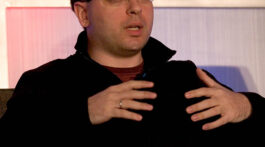




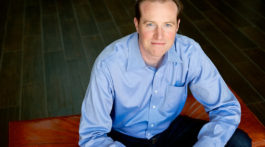


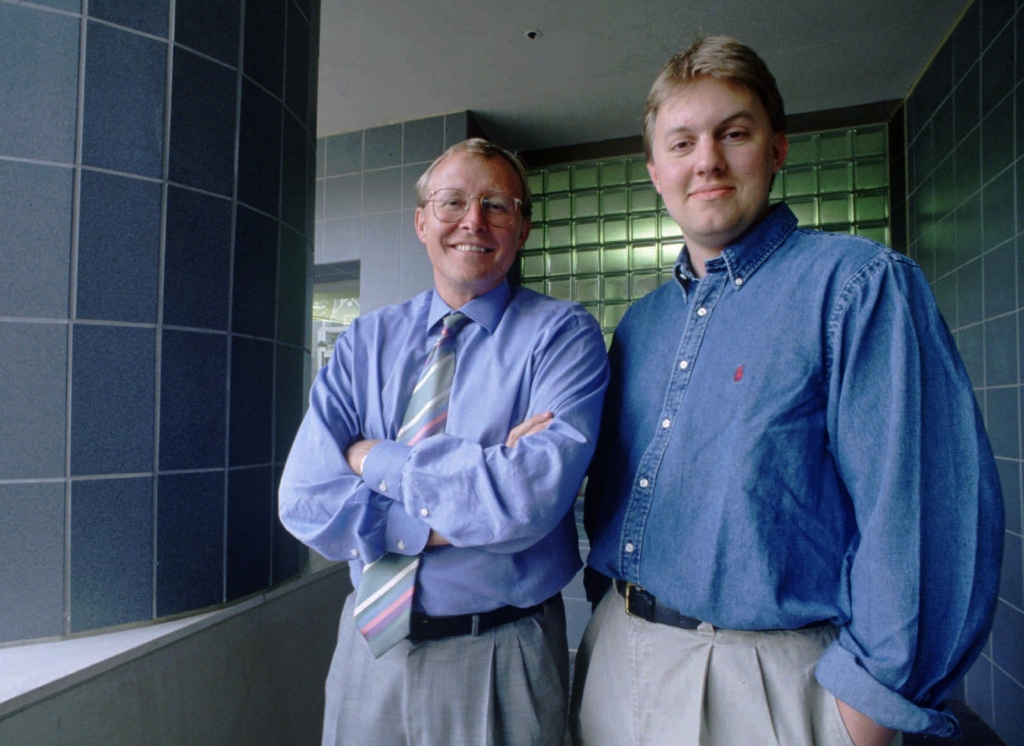
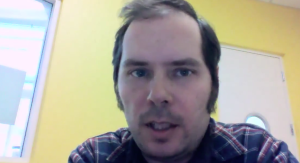

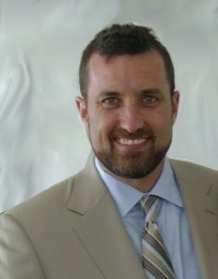

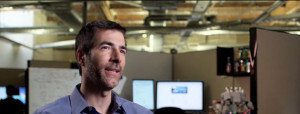
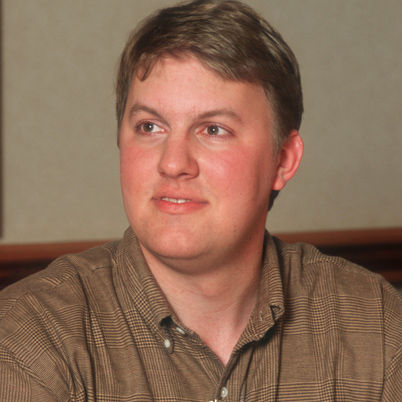
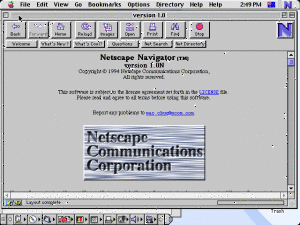
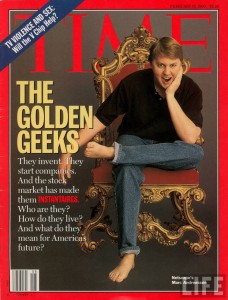
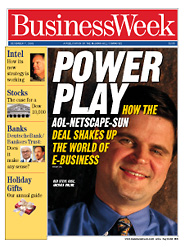


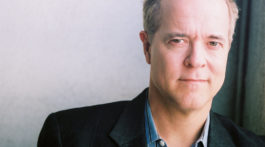


[…] JavaScript that still define the web today. The Internet History Podcast’s Brian McCullough interviewed the founding engineers who made Netscape possible in honor of the company’s twentieth […]
[…] JavaScript that still define the web today. The Internet History Podcast’s Brian McCullough interviewed the founding engineers who made Netscape possible in honor of the company’s twentieth […]
[…] JavaScript that still define the web today. The Internet History Podcast’s Brian McCullough interviewed the founding engineers who made Netscape possible in honor of the company’s twentieth […]
[…] that still define the web today. The Internet History Podcast’s Brian McCullough interviewed the founding engineers who made Netscape possible in honor of the company’s twentieth […]
[…] Aleks Totic, developer of the Mac versions of both the Mosaic and Netscape Navigator browsers. On the 20th […]
[…] McCullough / Internet History Podcast:On The 20th Anniversary – An Oral History of Netscape’s Founding — It Was 20 Years Ago Today… On April 4th, 1994, Mosaic Communications Corporation was […]
[…] Read this article: On The 20th Anniversary – An Oral History of Netscape's Founding (Brian McCullough/Internet History … […]
[…] An oral history of Netscape’s founding (on its 20th […]
[…] • Why economists should try to measure happiness (The Week) • Upside: Are Small-Cap Stocks Overpriced? (WSJ) see also March Was Stormy Month for Hedge Funds (WSJ) • The age of asset management (FT Alphaville) • Choosing Bonds Over Gold (WSJ) • It IS about the risk premium! (Humble Student of the Markets) see also How Not to Do It (Above the Market) • Who’s Inheriting Your 401(k)? (WSJ) • The Daily Routines of Geniuses (Harvard Business Review) • The Affordable Care Act’s Remarkable 4 Near-Death Experiences (Johnathon M Ladd) see also Now-Discredited Examples of Obamacare Doomsaying (New Republic) • Brooklyn’s Hipster Economy Challenges Manhattan Supremacy (Bloomberg) • On The 20th Anniversary – An Oral History of Netscape’s Founding (Internet History Podcast) […]
Fascinating read, let down by poor technology details (X is a version if Unix, indeed) that a quick visit to Wikipedia would correct. It makes me wonder how much else which I don’t know about is also wrong.
No, perfectly aware of the difference. 🙂 I over-simplified for efficiency’s sake. But noted and correction made to be more clear.
[…] ~ Brian McCullough, from On The 20th Anniversary – An Oral History Of Netscape’s Founding […]
Microshaft should have seen this one coming…. Netscape was the beginning of the end for Microshaft… And just recently, the final peg from that bowl of cow patties bit the dust – Ballmer.. RIP Steve… NOBODY misses you.
Yeah, but didn’t “microshaft” as you put it, kind of win this particular round?
[…] McCullough interviews Netscape’s founding […]
[…] -An oral history of Netscape on its 20th anniversary, from the perspective of its creators. Read more oral histories. […]
[…] reliving the Netscape heydays by listening to Brian McCullough’s excellent podcast series at the Internet History Podcast. Highly […]
[…] On The 20th Anniversary – An Oral History of Netscape’s Founding […]
[…] another anniversary is celebrated in April with 20 years since the inception of Mosaic/Netscape Navigator (source: Internet History […]
[…] we weren’t publishing then, but twenty years ago Netscape was founded (originally as Mosaic Communications). I remember reading about it, and had been an NCSA Mosaic […]
This is a fun trip back in history. I worked at SGI at the time in Dallas (non engineer). I saw Mosaic and remember thinking how very cool it was. It was all so new. And of course I used Netscape (on my Irix desktop). I heard some of the stories at the time but only remotely and no real details. A really interesting read. Thanks!
[…] everything moved faster online. And yet it was, as technology writer Brian McCullough correctly noted a few months ago, “the first Internet startup that […]
[…] on October 13, 1994 when the Netscape Navigator browser was released by the Mosaic (later Netscape) Corporation. Before Microsoft’s Internet Explorer became the dominant browser, Netscape […]
[…] on October 13, 1994 when the Netscape Navigator browser was released by the Mosaic (later Netscape) Corporation. Before Microsoft’s Internet Explorer became the dominant browser, Netscape […]
[…] remember NCSA Mosaic? Co-developed by Marc Andreessen, who later went on to develop Netscape, Mosaic was bundled with a lot of internet service provider (ISP) starter kits. Both Netscape 2.0 […]
[…] is a phenomenal article on the Internet History Podcast web site. If you want to take a quick trip down memory lane and remember (or learn for the […]
[…] histories from a good chunk of the original Netscape engineering team (read a summary oral history here or you can listen to all the oral histories here). We all know that the Internet, and even the web, […]
[…] remember NCSA Mosaic? Co-developed by Marc Andreessen, who later went on to develop Netscape, Mosaic was bundled with a lot of internet service provider (ISP) starter kits. Both Netscape 2.0 […]
[…] remember NCSA Mosaic? Co-developed by Marc Andreessen, who later went on to develop Netscape, Mosaic was bundled with a lot of internet service provider (ISP) starter kits. Both Netscape 2.0 […]
[…] keep in mind NCSA Mosaic? Co-developed by Marc Andreessen, who later went on to develop Netscape, Mosaic was bundled with a number of web service supplier (ISP) starter kits. Each Netscape 2.zero […]
[…] On The 20th Anniversary – An Oral History of Netscape’s Founding […]
[…] On The 20th Anniversary – An Oral History of Netscape’s Founding […]
[…] web browser company that ushered in the dawn of the commercial Internet during the 1990’s. The history of Netscape is a walk down memory lane for me (I was working for their ad agency at the time) so it was a real […]
[…] The Internet History Podcast (20th Anniversary) – Oral History of NetScape’s Founding […]
[…] et voir qui le ferait en premier», créateur de la version Windows de Mosaic Jon Mittelhauser rappelé plus tard. Parfois, les fonctionnalités étaient ratées et n’iraient pratiquement pas du tout. […]
[…] race and see who would do it first,” creator of the Windows version of Mosaic Jon Mittelhauser later recalled. Sometimes, the features were duds and would hardly go anywhere at all. Other times, as […]
[…] race and see who would do it first,” creator of the Windows version of Mosaic Jon Mittelhauser later recalled. Sometimes, the features were duds and would hardly go anywhere at all. Other times, as […]
[…] and see who would do it first,” creator of the Windows version of Mosaic Jon Mittelhauser later recalled. Sometimes, the features were duds and would hardly go anywhere at all. Other times, as […]
[…] and see who would do it first,” creator of the Windows version of Mosaic Jon Mittelhauser later recalled. Sometimes, the features were duds and would hardly go anywhere at all. Other times, as […]
[…] and see who would do it first,” creator of the Windows version of Mosaic Jon Mittelhauser later recalled. Sometimes, the features were duds and would hardly go anywhere at all. Other times, as […]
[…] SSL y JavaScript que definen la web hoy. Podcast de la historia de Internet de Brian McCullough entrevistador los ingenieros fundadores que hicieron posible Netscape en honor al vigésimo aniversario de la […]